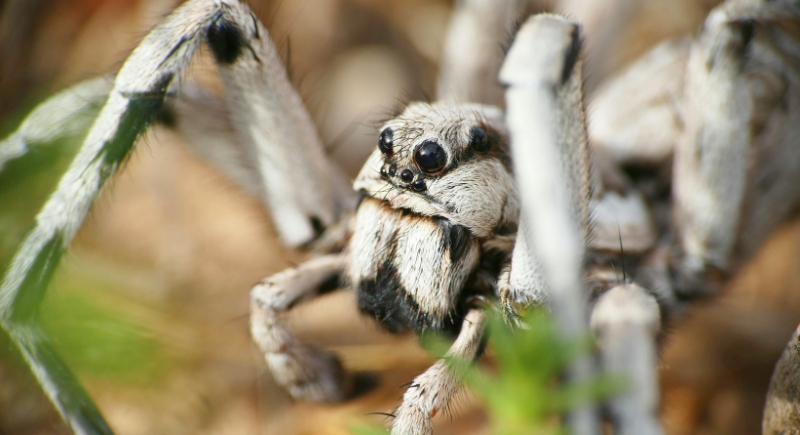The Truth About How Dangerous a Wolf Spider Bite Actually Is
Wolf spiders have a reputation for being intimidating, and it’s easy to see why. They’re fast, hairy, and large enough to make anyone jump when one scurries across the floor. In Australia and the United States, people often mistake them for other spiders, such as the huntsman or the dangerous brown recluse. With their speed and size, it’s no wonder people assume their bites must be serious. However, the truth about wolf spider bites is far less dramatic than the myths suggest.
What Makes a Wolf Spider Different

Image via Pexels/Marcus Lange
Wolf spiders don’t spin webs to catch prey. Instead, they rely on their sharp eyesight and quick legs to chase down prey, like insects. That hunting style earned them their name, since they pounce on food like wolves do. They’re medium-sized spiders, usually between half an inch and two inches long, and their coloring depends on where they live. Most are shades of brown, gray, or black, with patterns that help them blend into leaves, dirt, and bark. If you turn on a flashlight at night, you might even see their reflective eyes glowing back at you.
One of the most fascinating aspects of wolf spiders is their parenting behavior. Female spiders carry egg sacs on their abdomen and later let dozens of tiny spiderlings hitch a ride on their back until they’re ready to head out on their own. It’s a strange but impressive sight that sets them apart from many other spider species.
Really, How Dangerous Are They?
Wolf spider bites are not considered dangerous to humans. They are venomous, but their venom is meant to subdue insects rather than harm people. If one bites you, the most common reaction is mild pain, redness, swelling, or an itchy spot. Some bites may even leave small puncture marks from their fangs. The symptoms usually fade within a few days.
The only real concern comes if someone has an allergic reaction, which is unusual but possible. Signs include rash, blistering, swelling of the face or throat, or difficulty breathing. These situations require medical attention, but they are extremely rare. This is a big difference compared to spiders like the brown recluse or black widow, whose bites can cause serious medical issues.
Easy Treatment at Home

Image via Getty Images/Tatomm
Most bites don’t need a doctor’s visit. Wash the bite with soap and water to keep it clean. An ice pack can help alleviate swelling and itchiness, while over-the-counter antihistamines are useful if the itching becomes bothersome. Using an antibiotic ointment may also lower the chance of infection. The key is to avoid scratching since that can make things worse. If the bite doesn’t improve after a few days or symptoms spread, then it’s smart to call a doctor.
How to Avoid Bites
Wolf spiders aren’t aggressive and only bite when they feel trapped. Still, you can lower your chances of running into one by shaking out shoes and clothing stored in garages, sheds, or basements. Wear gloves when moving firewood or cleaning outdoor areas. Keep grass trimmed and clear away piles of leaves or debris where spiders may hide. Indoors, sealing cracks around doors and windows makes it harder for them to slip inside.
Wolf Spiders Are Worth Keeping Around

Image via iStockphoto/Macrolife.it
As creepy as they look, wolf spiders are helpful. They eat pests like cockroaches, crickets, flies, and beetles, and sometimes even other spiders. Out in the garden, they control insect numbers without leaving behind messy webs. If you find one inside, the best approach isn’t to panic or spray chemicals. Catch it with a container, release it outside, and let it get back to hunting bugs.
Wolf spiders may not be anyone’s favorite houseguest, but the fear around their bite is bigger than the reality. They only bite when threatened, the effects are usually mild, and they’re valuable pest controllers in your yard. The next time you spot one, you now know that it’s no monster hiding in the shadows. It’s just a fast-moving hunter doing its job.